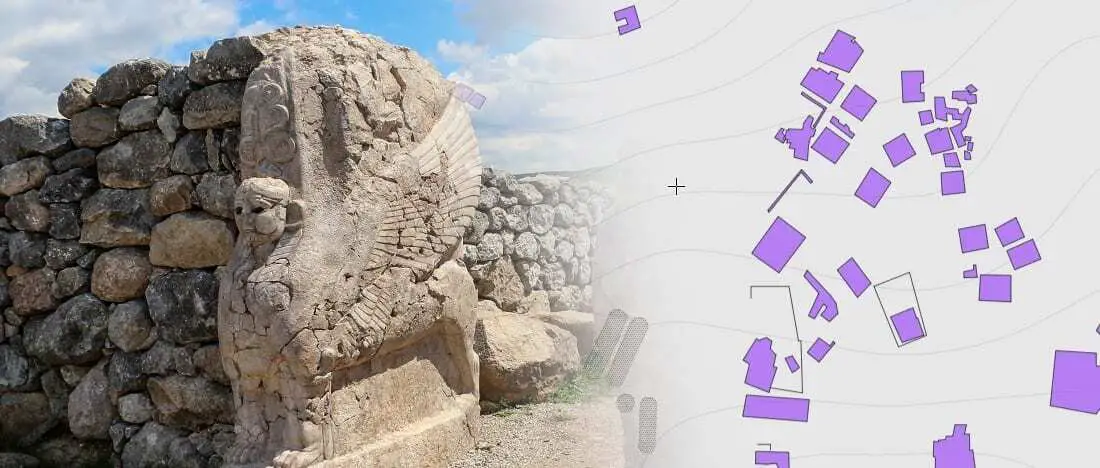The Hittites were an Ancient Anatolian people who established an empire centred on Hattusa in north-central Anatolia around 1600 BCE.
Hattusa was the capital city of the Hittite Empire in the late Bronze age and lies near Boğazkale in Turkey where the earliest traces of settlement on the site are from the sixth millennium BCE. This empire reached its height during the mid-14th century BCE under Suppiluliuma I, when it encompassed an area that included most of Asia Minor as well as parts of the northern Levant and Upper Mesopotamia.
At its peak, modern estimates put the population of the city between 40,000-50,000, covering an area of 1.8 km² and comprising of an inner and outer portion, both surrounded by a massive and still visible course of walls erected during the reign of Suppiluliuma I (circa 1344–1322 BCE). The city was destroyed, together with the Hittite state itself, around 1200 BCE, as part of the Bronze Age collapse. Excavations suggest that Hattusa was gradually abandoned over a period of several decades as the Hittite empire disintegrated.
You can select full-screen mode on desktop by clicking on the “X” symbol beneath the map. For full screen on tablet or mobile, Click Here
![]()

